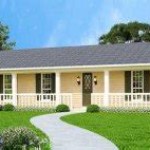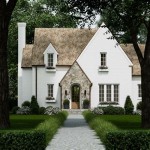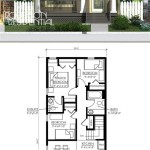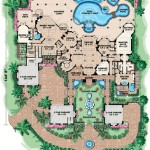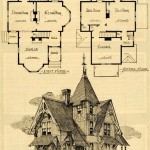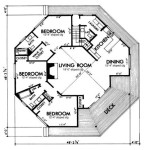Tree house design plans serve as the blueprints for constructing safe and functional elevated structures nestled amidst the branches of trees. These plans provide detailed instructions and specifications for all aspects of the tree house’s design, from the foundation and framing to the roofing and finishes. For instance, a tree house design plan for a whimsical retreat for children might incorporate a play area, a reading nook, and a lookout tower.
The creation of a tree house design plan requires careful consideration of various factors, including the tree’s species, size, and health; the intended use of the tree house; and the local building codes and regulations. By adhering to a well-crafted design plan, homeowners can ensure the structural integrity, safety, and aesthetic appeal of their tree house, creating a unique and memorable space for recreation, relaxation, or simply enjoying nature’s beauty.
Effective tree house design plans prioritize the following key considerations:
- Tree species
- Tree health
- Tree size
- Intended use
- Building codes
- Safety
- Structural integrity
- Aesthetics
By addressing these factors, tree house design plans lay the foundation for safe, functional, and visually appealing elevated structures that can be enjoyed for years to come.
Tree species
The species of tree selected for a tree house plays a crucial role in determining the design and construction of the structure. Different tree species possess varying characteristics that impact their suitability as tree house hosts. These characteristics include:
- Strength and stability: The tree must be strong enough to support the weight of the tree house and its occupants without compromising its structural integrity. Factors to consider include the tree’s trunk diameter, root system, and overall health.
- Branch structure: The tree’s branch structure should provide a stable base for the tree house. Branches should be strong and well-spaced to accommodate the tree house’s platform and other elements.
- Growth rate and longevity: The tree’s growth rate and expected lifespan should be taken into account to ensure the long-term viability of the tree house. Fast-growing trees may require more frequent maintenance, while trees with shorter lifespans may not be suitable for long-term tree house projects.
- Disease resistance: Trees that are prone to disease or pests may not be ideal for tree houses as they may weaken the tree and compromise its safety.
Some tree species that are commonly used for tree houses include oak, maple, cedar, and redwood. These trees are known for their strength, stability, and resistance to decay.
It is important to consult with a qualified arborist or tree care professional to assess the suitability of a particular tree for a tree house. They can evaluate the tree’s health, structure, and species to determine if it is a good candidate for a tree house and provide guidance on the best design and construction practices.
Tree health
The health of the tree is paramount when considering tree house design plans. A healthy tree is more likely to be able to support the weight of a tree house and its occupants, and it is less likely to be damaged by storms or other environmental factors. When assessing the health of a tree for a tree house, there are several key factors to consider:
Tree age and condition: Older trees may be more susceptible to decay and disease, which can weaken the tree and make it less suitable for a tree house. It is important to have the tree inspected by a qualified arborist to assess its overall condition and suitability for a tree house.
Root system: The root system of the tree provides stability and support. A tree with a strong and healthy root system is more likely to be able to support the weight of a tree house. The location of the tree house should be carefully planned to avoid damaging the tree’s roots.
Trunk and branches: The trunk and branches of the tree should be free of any major defects, such as cracks, decay, or rot. The branches should be strong enough to support the weight of the tree house and its occupants, and they should be well-spaced to provide a stable base for the tree house.
Foliage: The health of the tree’s foliage can be an indicator of its overall health. Healthy trees have full, green foliage. Yellowing, wilting, or sparse foliage can be a sign of stress or disease.
By carefully assessing the health of the tree, homeowners can make informed decisions about the design and construction of their tree house, ensuring the safety and longevity of both the tree and the tree house.
Tree size
The size of the tree is another important factor to consider when designing a tree house. The tree must be large enough to support the weight of the tree house and its occupants, and it must have enough space to accommodate the desired design. The following are some key considerations related to tree size:
Trunk diameter: The trunk diameter of the tree should be large enough to support the weight of the tree house. A general rule of thumb is that the trunk diameter should be at least 12 inches for a small tree house and at least 18 inches for a larger tree house.
Branch size and spacing: The branches of the tree should be strong enough to support the weight of the tree house and its occupants. The branches should also be well-spaced to provide a stable base for the tree house. The distance between the branches should be at least 6 feet to allow for easy access to the tree house.
Height of the tree: The height of the tree will determine the height of the tree house. The tree house should be high enough to provide a good view, but it should not be so high that it is difficult to access or maintain.
Crown spread: The crown spread of the tree is the area covered by the tree’s branches. The crown spread should be large enough to provide adequate shade and protection from the elements for the tree house.
By carefully considering the size of the tree, homeowners can ensure that their tree house is safe, stable, and enjoyable.
Intended use
The intended use of the tree house is a key factor to consider when designing a tree house plan. The design of the tree house should be tailored to the specific activities that will take place in the tree house. Some common intended uses for tree houses include:
- Recreation: Tree houses can be used for a variety of recreational activities, such as playing games, reading, or simply relaxing and enjoying the outdoors. Tree houses designed for recreation typically have open floor plans and large windows to provide plenty of natural light and ventilation.
- Relaxation: Tree houses can also be used as a place to relax and retreat from the hustle and bustle of everyday life. Tree houses designed for relaxation often have comfortable seating, hammocks, and other amenities that promote relaxation and tranquility.
- Work or study: Tree houses can also be used as a place to work or study. Tree houses designed for work or study typically have desks, chairs, and other amenities that support productivity and concentration.
- Storage: Tree houses can also be used for storage purposes. Tree houses designed for storage typically have shelves, cabinets, and other storage solutions to help keep items organized and out of the way.
By carefully considering the intended use of the tree house, homeowners can create a space that meets their specific needs and desires.
Building codes
Building codes are regulations that govern the construction of buildings and structures, including tree houses. Building codes are in place to ensure the safety and structural integrity of buildings and to protect the public from potential hazards. Tree house design plans must comply with all applicable building codes to ensure the safety of the tree house and its occupants.
- Foundation: Building codes may specify the type of foundation required for a tree house, such as a concrete pier foundation or a helical pile foundation. The foundation must be designed to support the weight of the tree house and its occupants, and it must be installed in a way that does not damage the tree’s roots.
- Framing: Building codes may specify the type of framing materials that can be used for a tree house, such as pressure-treated lumber or steel. The framing must be designed to support the weight of the tree house and its occupants, and it must be installed in a way that is safe and durable.
- Roofing: Building codes may specify the type of roofing materials that can be used for a tree house, such as asphalt shingles or metal roofing. The roofing must be installed in a way that is waterproof and durable, and it must be able to withstand the weight of snow and ice.
- Electrical: Building codes may specify the type of electrical wiring and fixtures that can be used in a tree house. The electrical system must be installed in a way that is safe and up to code, and it must be protected from the elements.
By complying with all applicable building codes, homeowners can ensure that their tree house is safe and structurally sound. Building codes help to protect the public from potential hazards, and they ensure that tree houses are constructed in a way that is respectful of the tree and the surrounding environment.
Safety
Safety is paramount when it comes to tree house design plans. Tree houses are elevated structures that can be exposed to a variety of hazards, so it is important to take steps to ensure the safety of the tree house and its occupants.
One of the most important safety considerations is the choice of tree. The tree should be healthy and strong enough to support the weight of the tree house and its occupants. The tree should also have a strong root system to prevent it from toppling over in high winds. It is important to have the tree inspected by a qualified arborist before building a tree house to assess its suitability and to identify any potential hazards.
Another important safety consideration is the design of the tree house. The tree house should be designed to minimize the risk of falls. This means that the tree house should have a sturdy floor and railings, and the stairs or ladder leading to the tree house should be safe and easy to use. The tree house should also be designed to withstand the weight of the occupants and any furniture or equipment that will be stored in the tree house.
In addition to the structural safety of the tree house, it is also important to consider the safety of the occupants. This means providing adequate lighting, ventilation, and fire safety measures. The tree house should also be equipped with a first-aid kit and other emergency supplies.
By carefully considering safety when designing a tree house, homeowners can create a space that is both fun and safe for everyone to enjoy.
Structural integrity
Structural integrity is a key consideration when designing a tree house. The tree house must be able to withstand the weight of the occupants and any furniture or equipment that will be stored in the tree house. It must also be able to withstand the forces of wind, snow, and ice. To ensure structural integrity, tree house design plans should include the following:
A strong foundation: The foundation of the tree house must be strong enough to support the weight of the tree house and its occupants. The foundation can be made of concrete piers, helical piles, or other materials that are suitable for the soil conditions at the site. The foundation should be installed in a way that does not damage the tree’s roots.
A sturdy frame: The frame of the tree house must be made of strong materials that are resistant to rot and decay. The frame can be made of pressure-treated lumber, steel, or other materials that are suitable for outdoor use. The frame should be designed to distribute the weight of the tree house evenly and to resist the forces of wind and snow.
Proper bracing: The tree house must be properly braced to prevent it from swaying or collapsing. Bracing can be added to the frame of the tree house or to the tree itself. Bracing should be made of strong materials that are resistant to rot and decay.
Adequate connections: All of the connections in the tree house must be strong and secure. The connections should be made with bolts, screws, or other hardware that is appropriate for the materials being used. The connections should be checked regularly to ensure that they are tight and secure.
By following these guidelines, homeowners can ensure that their tree house is structurally sound and safe for use.
Aesthetics
Aesthetics are an important consideration when designing a tree house. The tree house should be visually appealing and in harmony with the surrounding environment. The following are some key aesthetic considerations for tree house design plans:
- Color: The color of the tree house should complement the surrounding environment. Natural colors, such as green, brown, and beige, are often a good choice for tree houses. However, brighter colors can be used to create a more whimsical or playful look.
- Shape: The shape of the tree house can also affect its overall aesthetic appeal. Tree houses can be designed in a variety of shapes, including square, rectangular, round, and octagonal. The shape of the tree house should be chosen to complement the style of the tree and the surrounding environment.
- Materials: The materials used to construct the tree house can also affect its aesthetic appeal. Natural materials, such as wood and stone, can create a rustic look. Modern materials, such as metal and glass, can create a more contemporary look. The materials should be chosen to complement the style of the tree house and the surrounding environment.
- Details: The details of the tree house, such as the windows, doors, and trim, can also affect its overall aesthetic appeal. The details should be chosen to complement the style of the tree house and the surrounding environment. For example, a tree house with a rustic look might have wooden windows and doors with wrought-iron hardware. A tree house with a modern look might have metal windows and doors with sleek lines.
By carefully considering the aesthetic considerations, homeowners can create a tree house that is both visually appealing and in harmony with the surrounding environment.






:max_bytes(150000):strip_icc()/GettyImages-980431586-4febe9d7191241e2953abf9f0d10eb01.jpg)



Related Posts

